Resources
Arranging Downlights for General Lighting

Article Series: Working with Recessed Downlights
Choosing and Installing Recessed Downlights
Downlight layout tips for: General Lighting | Task Lighting | Wall & Accent Lighting
Choosing and Installing Recessed Downlights
Downlight layout tips for: General Lighting | Task Lighting | Wall & Accent Lighting
General lighting provides a uniform level of ambient illumination in a room or space. It doesnít highlight any particular aspects of the room; it just provides overall light that shines down and illuminates horizontal surfaces. While perhaps the least visually striking lighting method, it is required for the space to be functional, for circulation, and for egress. General lighting is the most common use of recessed downlights in interior spaces.

Get a Custom Quote to Light Your Space
Take the guesswork out of lighting layouts! Contact us today and let us assemble a custom quote for your project. We'll help determine the right lighting for your unique space.Spacing
In order to lay out our downlight fixtures, we first need to know how far apart to space them. Proper spacing of the cans will allow for even illumination throughout the room. This means the cones of light coming from each downlight luminaire, which should be wider for shorter ceilings and narrower for taller ceilings, will properly and smoothly overlap.Spacing Method #1: Ceiling Height Rule of Thumb
A quick way to determine for how far apart to space your recessed downlights is to take the ceiling height and divide by two. For example, an 8í-0Ē ceiling would have lights spaced every 4í-0Ē on-center, and a 10í-0Ē ceiling would have lights spaced every 5í-0Ē on center.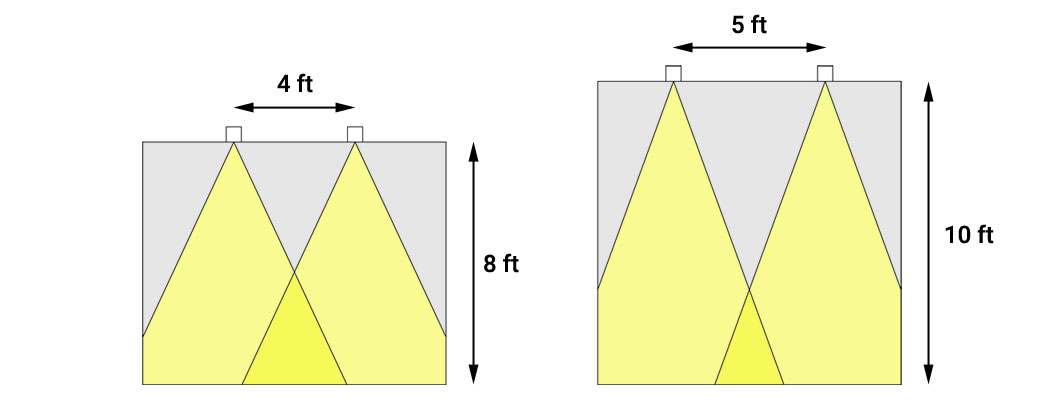
Spacing Method #2: Spacing Criteria
The more precise method for determining how far apart to space your LED can lights is known as the spacing criteria (SC) value. It is a number usually between 0.5 and 1.5 that is assigned by the manufacturer to a specific fixture, and can often be found on the specification sheet. The spacing criteria value takes into account the specific properties of that light to determine how close the fixtures need to spaced for proper and even illumination. The equation is as follows:Spacing Distance = Spacing Criteria (SC) x Mounting Height (MH)
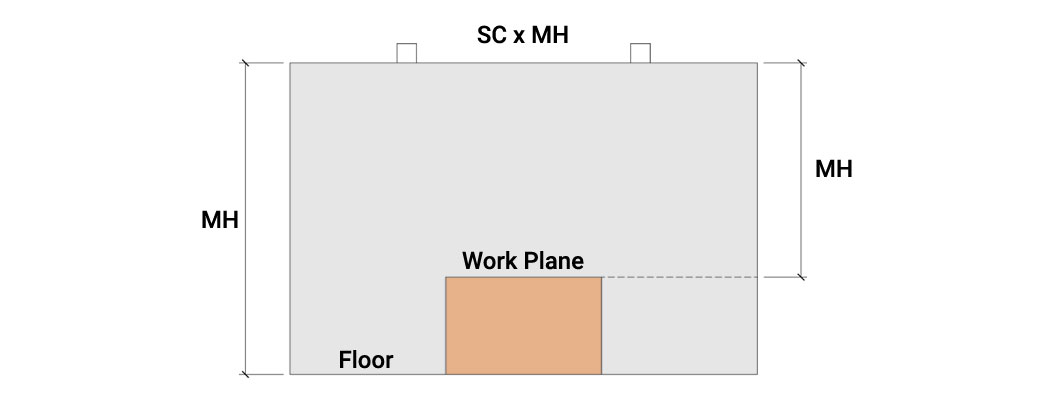
Mounting height is the distance from the ceiling to the floor or work surface. Which you choose depends on the type of room. For a living room or hallway, the illumination of the floor is the priority, so the mounting height would be the distance from the floor. But for a kitchen or an office, the illumination of a work plane or counter is the priority, so the mounting height would be the distance from the work surface.
Layout
Now that we know how far apart to space the recessed downlights, itís time to arrange them in the room. It is usually best to sketch out a plan of your room first. (If you also know where your ceiling joists are, itís best to include them in the sketch, as youíll need to install the lights between them.)1. Pick a starting point
Unless you have a specific area of the room where you know you want a light directly overhead, itís usually best to start your layout in the middle of the room. This can mean placing a light directly in the middle location or centering the surrounding lights around a middle point. From here, arrange your lights outward in a grid according to the spacing determined earlier.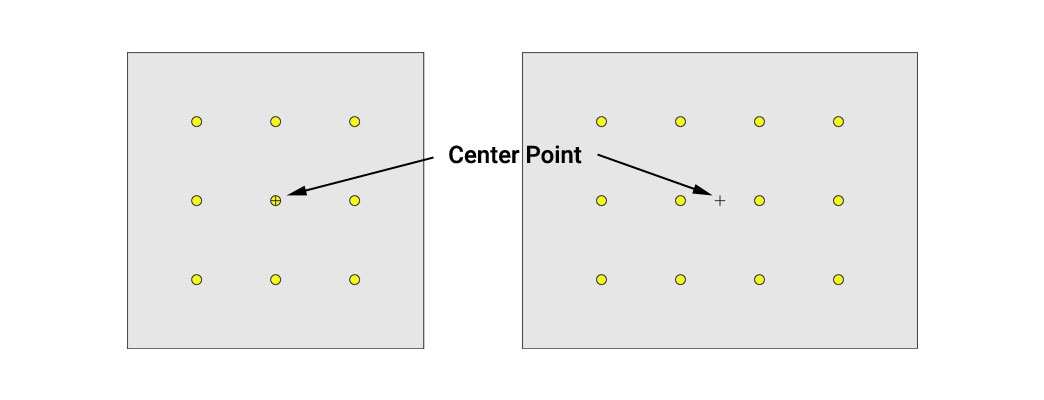
If you do have a particular object or area of the room that you want to highlight, you can place your first light in that location and then spread out from that point.
2. Avoid edges and corners
Be sure to keep any downlights at least 2 to 3 feet away from the edge of the ceiling where it meets the wall. This will help to avoid unsightly shadows. Plus, itís a waste of light.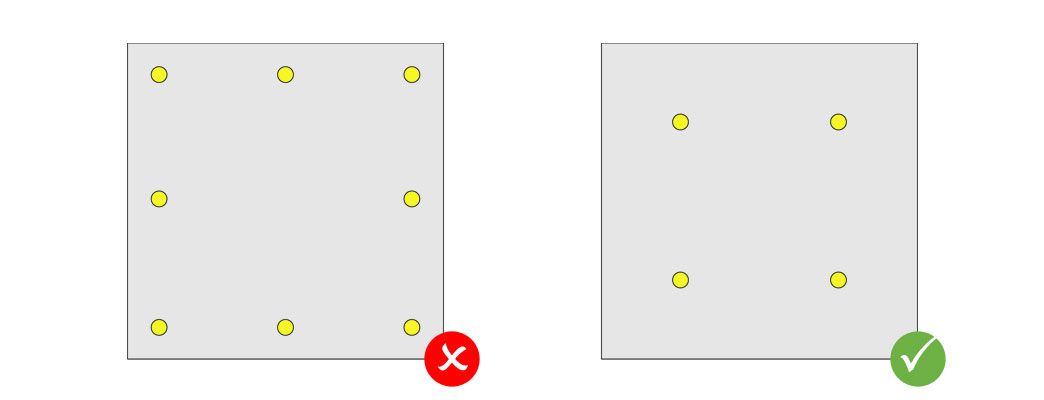
3. Watch out for fans
If you have a fan in your room, keep the downlights away from the spinning diameter of the fan blades. Otherwise, this will create a flicker effect in the entire room.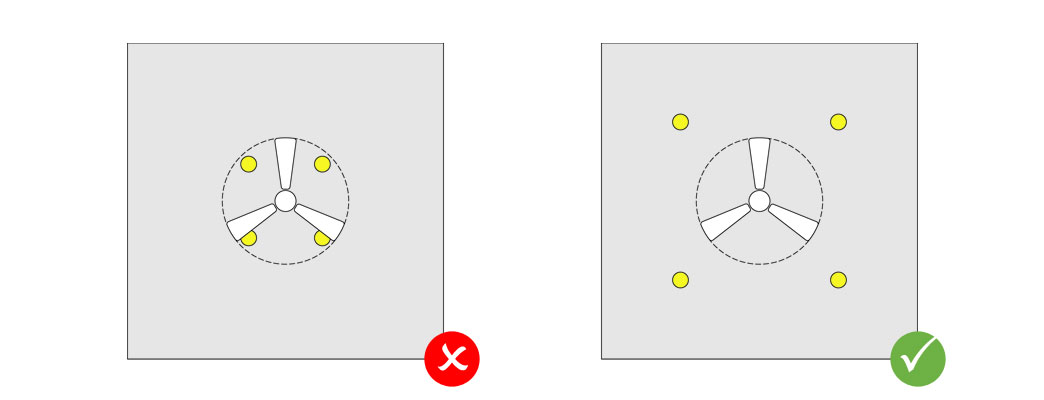
4. Keep at it
Odds are, the first time you lay out your recessed downlights, it wonít be quite perfect. Donít worry. This is why weíre using a sketchpad. (Computer modeling works too, if youíre able to do that.) Keep tweaking the arrangement and spacing until it works for your unique space.And remember, laying lights in a grid is just meant to be a starting point for general illumination. Focusing additional light on important objects to make them pop is what will start to give your space character.












